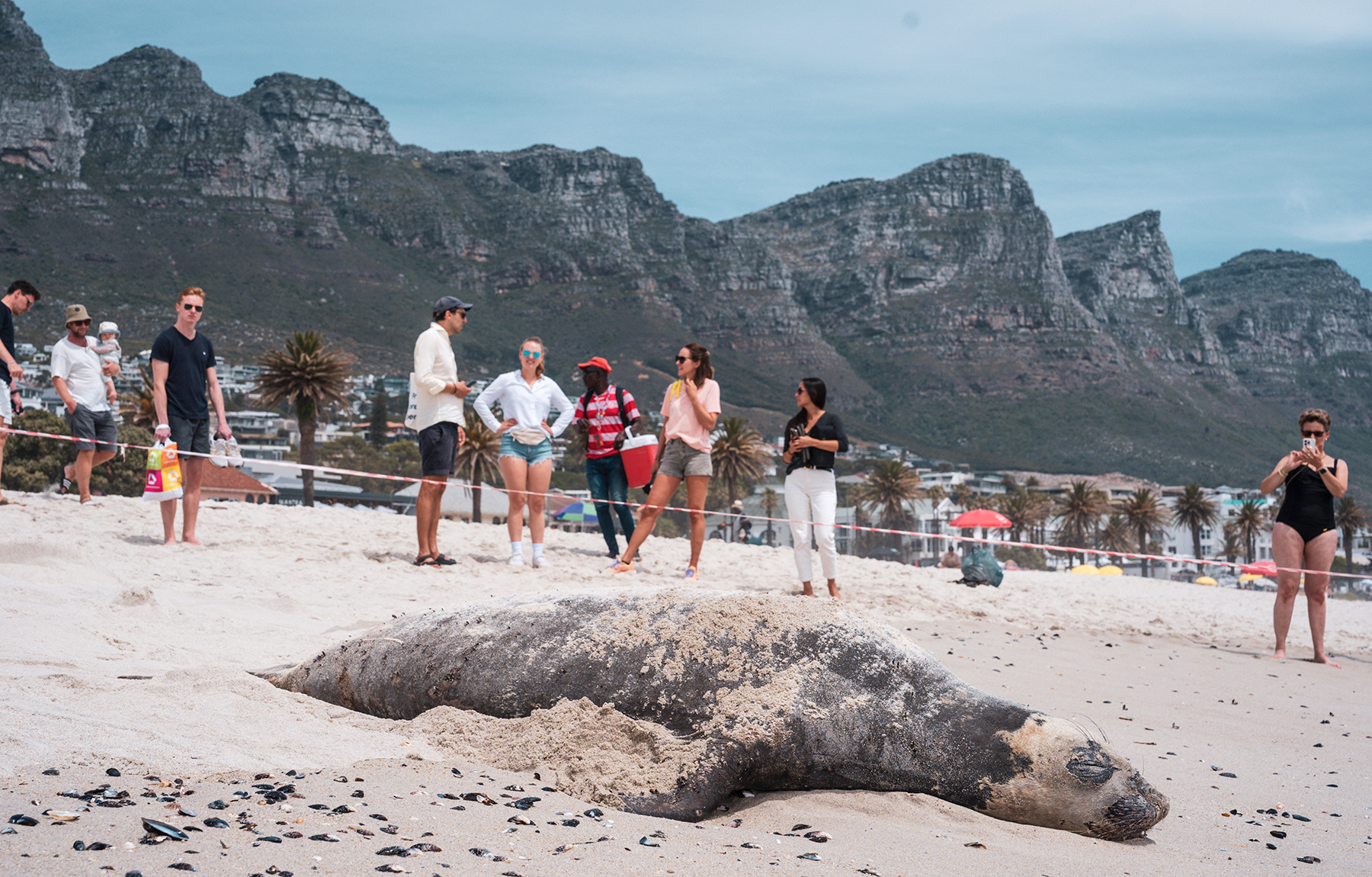Female southern elephant seals are significantly smaller than the males. While the latter can grow up to 6m long and weigh more than four tonnes, females average about 3m and 500kg.
Rabies vaccination question
This female’s appearance follows the well-documented visits of Buffel, a male southern elephant seal currently spending time near Duiker Island.
Read more: Antarctic wanderer Buffel, the southern elephant seal, gives Cape Town the annual seal of approval
Buffel recently received a rabies vaccination after an outbreak affecting Cape fur seals raised concerns.
Journey from the cold Southern Ocean
Southern elephant seals are native to the cold waters of the Southern Ocean, where they spend much of their time diving to remarkable depths in search of squid and fish. Occasionally, individuals make their way to Cape Town’s beaches, offering a rare chance to see these remarkable animals up close – but at a safe distance.
How to protect the seal
As exciting as it is to see such an unusual visitor, keeping your distance is essential to ensure the seal can rest undisturbed. If you’re in the area, here are a few simple guidelines:
- Approaching too closely will stress the animal and could disrupt her moulting process;
- Keep dogs on leashes. They should be kept away to protect both them and the seal; and
- Follow any safety measures. Barriers may be set up to protect the seal.
So, if you’re lucky enough to catch a glimpse of this remarkable animal during her stay, take a moment to marvel at the unique opportunity – and then let her rest undisturbed. DM
 A rare sight at Camps Bay: A female southern elephant seal rests on the beach, with the iconic backdrop of the Twelve Apostles. (Photo: Gunnar Oberhosel)
A rare sight at Camps Bay: A female southern elephant seal rests on the beach, with the iconic backdrop of the Twelve Apostles. (Photo: Gunnar Oberhosel)
 The female seal has moved from further up the beach and closer to the water. It’s unclear whether she’ll continue moulting here or move to another spot. (Photo: Gunnar Oberhosel)
The female seal has moved from further up the beach and closer to the water. It’s unclear whether she’ll continue moulting here or move to another spot. (Photo: Gunnar Oberhosel)
 At first glance this female southern elephant seal might be mistaken for a large Cape fur seal. However, her sheer size and distinctive features set her apart. (Photo: Gunnar Oberhosel)
At first glance this female southern elephant seal might be mistaken for a large Cape fur seal. However, her sheer size and distinctive features set her apart. (Photo: Gunnar Oberhosel)
 The area around the elephant seal has been cordoned off to ensure she has room to rest undisturbed – a crucial step in the moulting process. (Photo: Gunnar Oberhosel)
The area around the elephant seal has been cordoned off to ensure she has room to rest undisturbed – a crucial step in the moulting process. (Photo: Gunnar Oberhosel)
 Protecting his skin: Buffel flicks sand over his back, which helps shield his sensitive skin from the sun during moulting. (Photo: Gunnar Oberhosel)
Protecting his skin: Buffel flicks sand over his back, which helps shield his sensitive skin from the sun during moulting. (Photo: Gunnar Oberhosel)
 Buffel’s immense size – up to 6m and four tonnes – far exceeds females like the one on Camps Bay, who average 3m and 500kg. (Photo: Gunnar Oberhosel)
Buffel’s immense size – up to 6m and four tonnes – far exceeds females like the one on Camps Bay, who average 3m and 500kg. (Photo: Gunnar Oberhosel)
 Buffel, the male southern elephant seal we’ve come to know over the years, made Diaz Beach his moulting spot in March 2023. Known for his regular appearances along Cape Town’s coastline, Buffel continues to amaze with his sheer size. Most recently, he was sighted near Duiker Island, off Hout Bay. (Photo: Gunnar Oberhosel)
Buffel, the male southern elephant seal we’ve come to know over the years, made Diaz Beach his moulting spot in March 2023. Known for his regular appearances along Cape Town’s coastline, Buffel continues to amaze with his sheer size. Most recently, he was sighted near Duiker Island, off Hout Bay. (Photo: Gunnar Oberhosel)
 A German tourist holds a thick piece of Buffel’s shed fur found on Diaz Beach. (Photo: Gunnar Oberhosel)
A German tourist holds a thick piece of Buffel’s shed fur found on Diaz Beach. (Photo: Gunnar Oberhosel)
 Moulting up close: This detailed shot shows Buffel undergoing his ‘catastrophic moult’, a dramatic process where he sheds his fur and outer skin all at once. This renewal is essential for replacing layers damaged by months at sea, ensuring proper insulation for life in the cold Southern Ocean. (Photo: Gunnar Oberhosel) DM
Moulting up close: This detailed shot shows Buffel undergoing his ‘catastrophic moult’, a dramatic process where he sheds his fur and outer skin all at once. This renewal is essential for replacing layers damaged by months at sea, ensuring proper insulation for life in the cold Southern Ocean. (Photo: Gunnar Oberhosel) DM
https://www.youtube.com/watch?v=REeWvTRUpMk




 Moulting up close: This detailed shot shows Buffels undergoing his ‘catastrophic moult,’ a dramatic process where he sheds his fur and outer skin all at once. This renewal is essential for replacing layers damaged by months at sea, ensuring proper insulation for life in the cold Southern Ocean.
(Photo: Gunnar Oberhösel)
Moulting up close: This detailed shot shows Buffels undergoing his ‘catastrophic moult,’ a dramatic process where he sheds his fur and outer skin all at once. This renewal is essential for replacing layers damaged by months at sea, ensuring proper insulation for life in the cold Southern Ocean.
(Photo: Gunnar Oberhösel) 